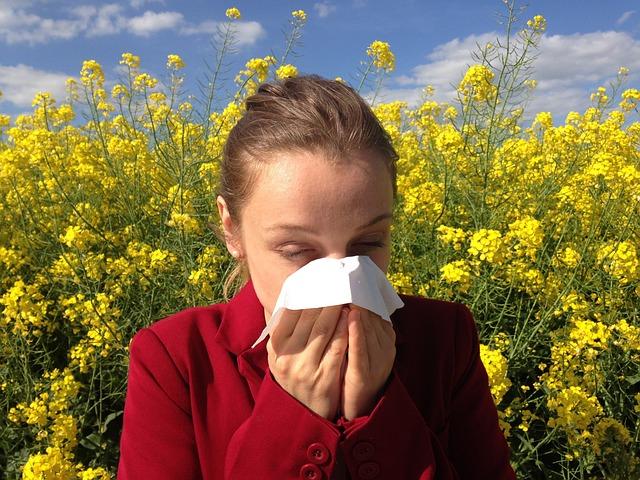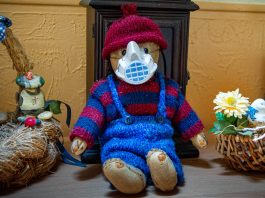Navigating the world of childhood allergies can often feel like a daunting journey for parents and caregivers. The constant vigilance required to ensure your child’s safety, coupled with the emotional strain of managing their discomfort, can sometimes be overwhelming. However, with the right knowledge and strategies, you can transform this challenge into a manageable part of daily life. In this guide, we will explore effective ways to manage your child’s allergies, offering practical tips and empathetic insights to help you create a safe and comfortable environment for your little one. Whether you’re dealing with food allergies, seasonal sensitivities, or allergic reactions to pets, understanding and implementing the right measures can make a significant difference in your child’s well-being and your peace of mind.
Identifying Allergy Triggers with Care and Precision
Understanding what sets off your child’s allergies is crucial for their well-being and comfort. The process involves keen observation and often a bit of detective work. Here’s how you can navigate this with care:
- Keep a Diary: Document your child’s daily activities, foods consumed, and environments visited. Note any allergic reactions, and over time, patterns may emerge that point to specific triggers.
- Consult Professionals: Engage with allergists who can perform tests to identify specific allergens. Skin prick tests or blood tests can provide insights into potential triggers.
- Monitor Environmental Changes: Pay attention to seasonal changes and environmental factors such as pollen levels, humidity, and temperature, which can exacerbate allergies.
Consider maintaining a simple table for tracking potential allergens and reactions:
| Day | Food/Activity | Reaction Observed | Possible Trigger |
|---|---|---|---|
| Monday | Peanut Butter Sandwich | Rash on arms | Peanuts |
| Wednesday | Outdoor Play | Sneezing | Pollen |
By being attentive and systematic, you can reduce the frequency and severity of allergic reactions, ensuring your child leads a healthier and happier life.

Creating a Safe and Allergen-Free Environment at Home
Creating a sanctuary where your child can breathe easy and thrive is paramount. Start by identifying potential allergens lurking in your home. Dust mites, pet dander, and mold are common culprits that can trigger allergic reactions. Implement regular cleaning routines, focusing on vacuuming carpets and washing bedding with hot water to eliminate dust mites. Consider investing in a HEPA filter for your vacuum cleaner and air purifier to capture these tiny irritants effectively.
- Control Humidity: Keep humidity levels below 50% to prevent mold growth.
- Pet-Free Zones: Designate specific areas in your home where pets are not allowed, especially bedrooms.
- Natural Cleaning Solutions: Use fragrance-free and non-toxic cleaning products to minimize chemical exposure.
Dietary allergens can also pose significant challenges. Maintaining an allergen-free kitchen requires vigilance and organization. Clearly label all food containers and consider creating a dedicated space for allergen-free foods. Communication is key, especially with caregivers and family members. Provide a comprehensive list of your child’s allergens and suggest safe alternatives.
| Common Allergen | Safe Alternative |
|---|---|
| Peanuts | Sunflower Seed Butter |
| Dairy | Almond Milk |
| Wheat | Quinoa |

Empowering Your Child Through Education and Support
Understanding and managing your child’s allergies can significantly improve their quality of life. Begin by educating yourself and your child about their specific allergens. Knowing what triggers an allergic reaction is crucial for effective management. You can create a simple reference table to track these allergens and reactions:
| Allergen | Symptoms | Prevention |
|---|---|---|
| Peanuts | Rashes, swelling | Avoid peanut products |
| Pollen | Sneezing, itchy eyes | Use air purifiers |
| Dust | Coughing, congestion | Regular cleaning |
Empower your child by teaching them to recognize early signs of an allergic reaction and encouraging them to communicate these symptoms to you or another trusted adult. Develop a routine that includes the following:
- Regularly update their allergy action plan.
- Ensure they carry necessary medications, like antihistamines or an epinephrine injector.
- Discuss with their teachers or caregivers about their allergies and emergency procedures.
Building a support network is equally important. Connect with other parents, join support groups, and maintain open communication with healthcare professionals to stay informed about new treatments or allergy management strategies. With the right education and support, you can empower your child to confidently navigate their world.

Collaborating with Healthcare Professionals for Optimal Allergy Management
Partnering with healthcare professionals is crucial for creating a tailored allergy management plan for your child. By working closely with allergists, pediatricians, and nutritionists, you can ensure a comprehensive approach to handling allergies effectively. Communication is key; keep an open line with your child’s healthcare team to update them on any new symptoms or reactions.
- Regular Check-Ups: Schedule periodic visits to monitor your child’s progress and adjust treatment plans as necessary.
- Allergy Testing: Consult with an allergist to determine specific allergens and update this information regularly.
- Emergency Action Plan: Develop a clear action plan with your healthcare provider for allergic reactions, including medication instructions.
To facilitate better understanding and management, consider maintaining a simple table for quick reference:
| Healthcare Professional | Role | Contact Frequency |
|---|---|---|
| Allergist | Identifies allergens and prescribes medication | Every 6 months |
| Pediatrician | Monitors overall health and development | Quarterly |
| Nutritionist | Provides dietary guidance | As needed |
By engaging with healthcare professionals, you ensure your child receives personalized care, which is essential for managing allergies effectively and improving their quality of life.




